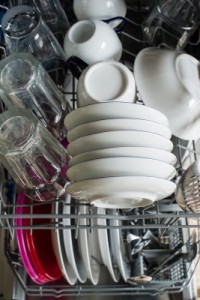 Looking at the description of the Proverbs 31 woman can be a bit daunting sometimes. How does she do all those things so gracefully? And does she even sleep? In addition to having her life organized, I’ll bet she also knows how to run her home efficiently, like a well-oiled machine. I imagine she doesn’t stand there and think “should I load the dishwasher now or leave the dishes for the end of the day”? She must have a process for everything.
Looking at the description of the Proverbs 31 woman can be a bit daunting sometimes. How does she do all those things so gracefully? And does she even sleep? In addition to having her life organized, I’ll bet she also knows how to run her home efficiently, like a well-oiled machine. I imagine she doesn’t stand there and think “should I load the dishwasher now or leave the dishes for the end of the day”? She must have a process for everything.
If you have worked in a corporate environment, it is possible that you might have run across the term “Lean” before. Lean is defined as “maximizing value while minimizing waste”. Companies spend a lot of money putting their employees through Lean Training so they can creatively redesign and standardize processes in such a way that they maximize value for the customer and minimize waste for the company. These principles can apply to our home environment as well!
There are 7 types of waste, which I have outlined in the chart below. I have also come up with examples as they might relate to home management.
| Type of Waste | Definition(beyondlean.com) | Example Relevant to Home Management |
| Overproduction | Producing things ahead of demand | You make a meal with so many leftovers that your family just can’t finish them before they go bad. |
| Transport | Unnecessary movement of materials between processes | You clean the downstairs bathroom first, and then carry your cleaning supplies to the upstairs bathroom. |
| Movement | Unnecessary movement of people during the course of their work. | You walk around the house collecting laundry from each room so you don’t miss anything. |
| Overprocessing | Inappropriate processing of parts. | You wash the laundry once, and then realize you forgot to spot treat the soccer jerseys your child needs for tomorrow, so you spot treat and wash them a second time. |
| Waiting | Inability to move to the next processing step | The dishwasher is full of dirty dishes already, and you are just finishing dinner. What to do with the dishes piling up? |
| Inventory | Storing more parts than the absolute minimum. | You stockpile a fridge full of zucchini when it’s on sale, thinking you’ll make zucchini bread, stir fry, etc. Then it goes bad before you finish it. |
| Defects | Production of defective parts | You leave the pizza in the oven too long and it burns. |
In addition to recognizing waste in its various forms, everything we do can be viewed in terms of value. Our day is full of processes made up of few or many steps. We can look at each step and assess whether it is necessary or wasteful in some way, by asking the question “Does this step of the process add value to my home/family?”
To get our brains working in this way, here is a video showing lean thinking applied to the laundry process.
What types of processes in your home can you identify as being “wasteful” of your time, energy, money, etc?

We were just saying tonight how annoying it is to be on the 5th floor because our laundry and garbage piles up and we don’t take care of it as quickly as we did living on the first floor in our last apartment.
I understand 🙁 Sometimes I have to remind myself that doing housework is, more often than not, my exercise for the day. So running up and down the steps 20 times in a day is really not all bad.